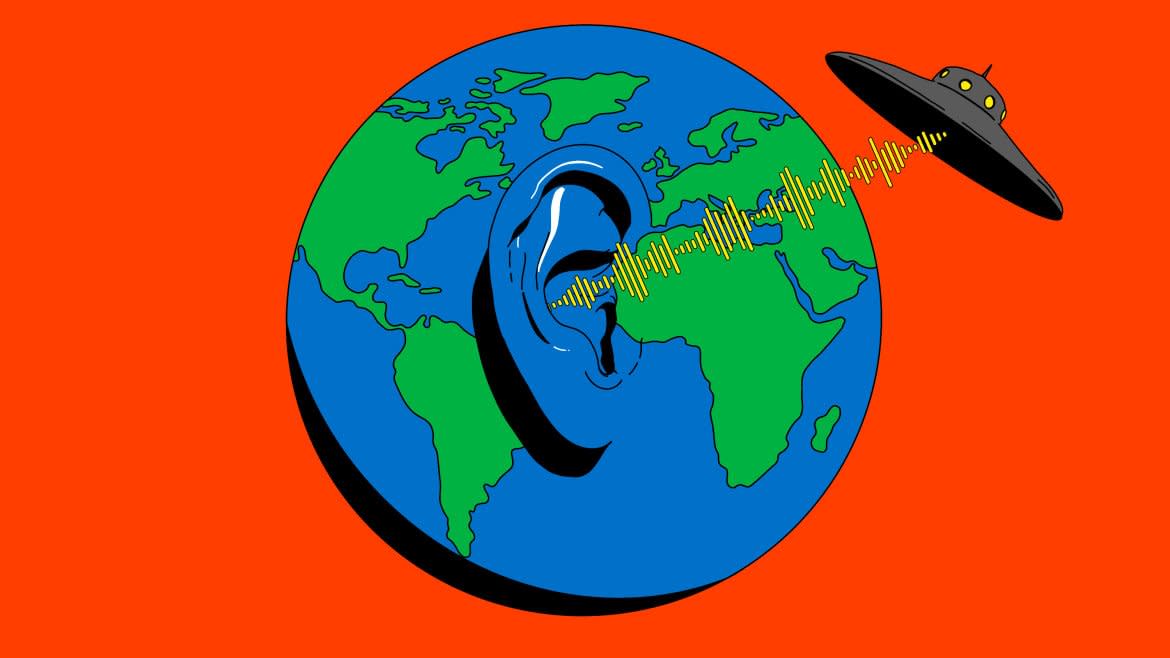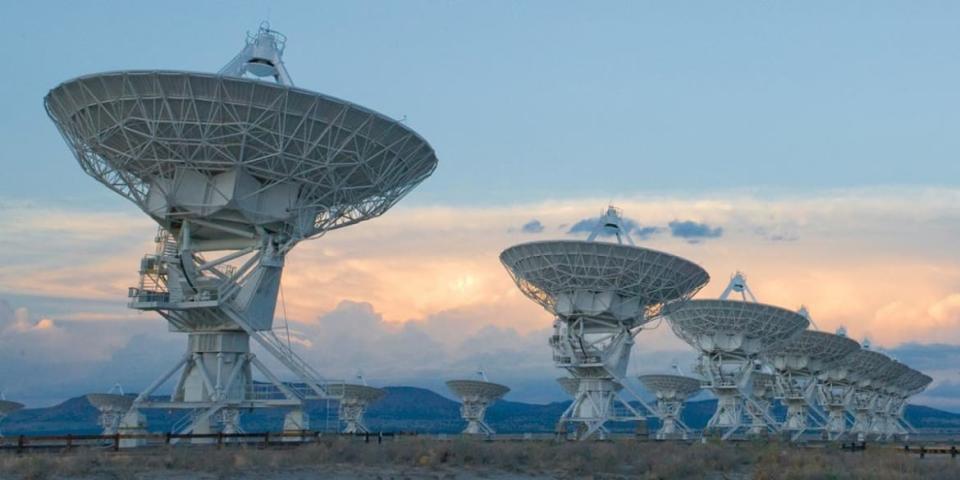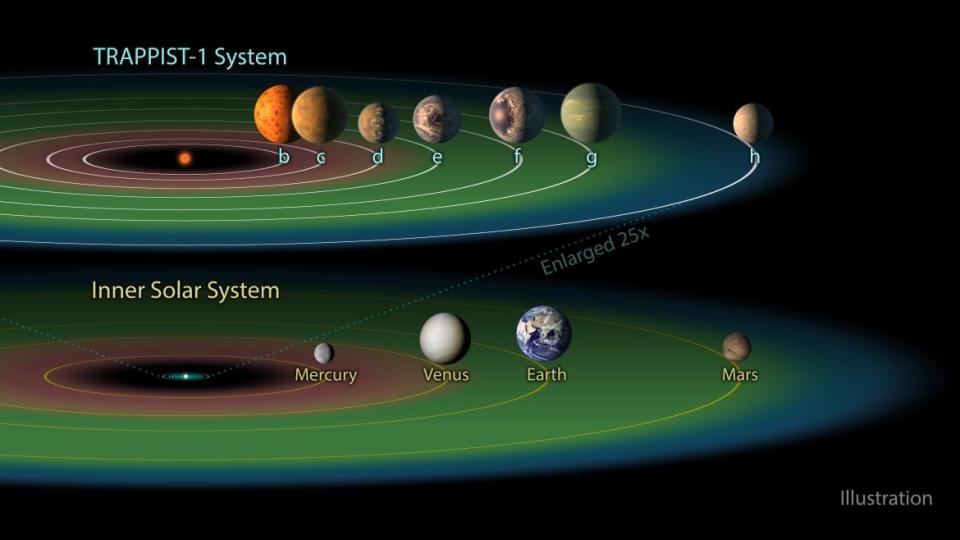Our Efforts to Find Alien Life Have Gone Nowhere. This New Strategy Could Change That.

For more than 60 years, scientists have been pointing radio antennas at the sky, hoping to overhear a broadcast from an alien civilization—proof that we’re not alone in the universe.
But the search for extraterrestrial intelligence, or SETI, is like listening for a whisper in a hurricane. Space is incomprehensibly big. There’s noise sputtering from every direction, especially from the countless number of stars dying and being born. A signal from E.T. might be faint. We’ve got only so many instruments and so much time, money and manpower for our intergalactic eavesdropping.
Worse, we might not even recognize an alien broadcast when we hear it. After all, who knows how E.T. would actually communicate?
Ross Davis, a specialist in information and communication sciences at Indiana University, is willing to venture a guess at what aliens sound like from afar. He hopes that could be enough to help SETI scientists cut through the noise and narrow their search. “All of this to help us arrive closer to the answer of one of humanity’s most important questions—is there life elsewhere in the universe?” Davis told The Daily Beast.
In a new study that has not yet been peer-reviewed, Davis described how a high-tech alien civilization might use long-range microwave radio to relay messages from planet to planet—and also help navigate between them.
With this dual-purpose “technosignature” as a guide, SETI practitioners could direct their attention to the spots in space where possible alien broadcasts make the most sense, thereby eliminating huge chunks of the galaxy from the SETI search pattern.
It’s a potentially elegant solution to an old problem in radio-based SETI. “Historically, radio SETI has searched only a small portion of the sky for technosignatures,” Davis said.
How Little Lasers Might Light Our Way to Extraterrestrials
Our slow, narrow, and random search of the vastness of space is one possible reason we’ve never actually found any alien signals. “It’s like scooping just a single glass of water from the ocean,” Davis said, paraphrasing astronomer Jill Tarter, an early SETI advocate.
Davis’s approach, if it stands up to peer review and finds widespread acceptance in SETI, could shrink that cosmic ocean. The hunt for alien signals would still face long odds. Just slightly less long.
Many scientists consider it a mathematical likelihood that there’s other life out there, somewhere. Why would our planet, and our planet alone, evolve life? “Earth is not the center of the universe,” Martin Dominik, an astronomer at the University of St. Andrews in Scotland, told The Daily Beast. “Why should we be the only ones?”
If these scientists are right and Homo sapiens is just one of many sentient species in the Milky Way, then Davis’s technosignature could help bring forward the day when we finally meet them.
What we now call the research field of SETI got its start in 1960, when Cornell University astronomer Frank Drake pointed an 85-foot-wide radio telescope in West Virginia at the stars Tau Ceti and Epsilon Eridani. The former is similar to our own sun. The latter occupies a place in the galaxy that makes it visible from most of Earth’s surface. He did a quick scan, listening for a signal that sounded artificial. That is, a signal that would repeat within a narrow bandwidth.
He heard… nothing. Just random noise.

The Very Large Array, a collection of 27 radio antennas located in Socorro, New Mexico. Instruments like this are vital to SETI research.
SETI has gotten a lot more sophisticated since then. There are scientific bodies all over the world listening for alien chatter. Scientists have also begun scanning for patterns of laser light that could hint at extraterrestrial space-exploration efforts, a practice they call “laser SETI.”
But the expansion of our SETI efforts haven’t turned up any evidence of E.T., leading some scientists to believe it’s time to take a closer look at just a few places of interest.
We could start by trying to put ourselves in the aliens’ shoes. “We need to imagine what much more advanced extraterrestrials would do,” Douglas Vakoch, who heads METI International, a SETI research organization in San Francisco, told The Daily Beast.
Davis proposed we start by asking ourselves where an alien civilization might thrive—and expand to the point where it starts beaming signals we might detect here on Earth. Wade Roush, a science lecturer and author of Extraterrestrials, told The Daily Beast he endorses that approach. “We need to go back to first principles and figure out what we think we're looking for,”
The place to start looking, Davis posited, is among the known “exoplanets.” That is, planets beyond our own star system but still within our galaxy and close enough to glimpse. Astronomers peering through increasingly powerful telescopes have been identifying exoplanets since 1992. Today, NASA’s running list includes around 5,000 of these faraway planets.
Even 5,000 planets is too many for an intensive search. We could pick the best candidates for a careful SETI survey by mapping them in relation to each other. A tight cluster of exoplanets, perhaps spread across a handful of neighboring stars, might make more sense as the seat of a sprawling alien civilization than, say, one lonely exoplanet spinning all by itself around some isolated star.
The idea is that any alien civilization broadcasting signals we might overhear from hundreds or even thousands of light-years away would, by definition, be sophisticated enough to also create offworld colonies around its own home star, as well as neighboring ones. The latter might even be a prerequisite for the former.
After all, why would aliens just randomly shoot radio signals across the galaxy? In Ross’s thinking, it’s more logical that they’d beam information-rich, wideband microwave messages between their homeworld and surrounding colonies. Messages we might be able to eavesdrop on, if we’re lucky enough to be in the path of a stray signal.
The result of Ross’s network-first approach to SETI would be a map of a potential alien civilization. One with a central hub, outlying nodes and potential connections between them. An organization not unlike our own species’ computer networks, but spread across several light-years.
It makes sense that an advanced civilization would organize itself in this way, Vakoch said. “Aliens who have expanded beyond their home planet might establish a communications network that looks like a wagon wheel. Their home world would be at the hub of the network, and strong, directed radio signals could travel in straight lines to distant colonies, like a series of spokes radiating out from the central hub.”

The TRAPPIST-1 system, about 40 light-years from Earth, contains a total of seven known Earth-sized planets. Three of them are located in the habitable zone of the star, where temperatures are just right for liquid water to exist on the surface. Its conceivable that intelligent life would be able to colonize multiple planets in the system.
The groups of exoplanets with the most potential close connections are the one we should be searching for signals, Ross said. Specifically, we should be listening for repeating, wideband microwave broadcasts with embedded coordinates.
A repeating, wideband signal implies deliberate construction. That is, a message with lots of information. “Interstellar HD television,” is how Vakoch characterized it. The embedded coordinates would tell us that one alien is trying to tell another alien where they are in relation to each other. The galactic equivalent of dropping a pin on your map app.
Find both, and you may have found E.T.
If there’s a downside to Davis’s technosignature approach to SETI, it’s that it hinges on big assumptions. You start by assuming aliens would communicate like we would, with a broad microwave signal chock-full of information. Then you go looking specifically for that kind of broadcast.
There’s a kind of human vanity baked into that attitude. “We tend to view the technologies and opportunities for SETI through the lens of our latest technologies,” Roush explained. Davis’s approach risks overlooking different kinds of communications as well as possible extraterrestrial civilizations inhabiting seemingly unlikely corners of the galaxy.
The Chances of Finding Alien Life on Jupiter’s Moon Europa Just Shot Way Up
But Davis countered that people and aliens might have no choice but to communicate in similar ways. “The aliens on these exoplanets and we here on Earth have a common denominator–the scientific laws of the universe that we both have to deal with.”
And considering the scale of the problem—an entire galaxy to listen in on, and only so many scientists with so much time to do the listening—Davis’s assumptions, however imperfect, might still be pretty helpful. “It does make sense to focus our attention and resources,” Roush said.
If searching for E.T. is like scooping cupfuls of water from the ocean, shrinking the ocean to a lake at least could keep us from despairing at the seeming hopelessness of the task.
Get the Daily Beast's biggest scoops and scandals delivered right to your inbox. Sign up now.
Stay informed and gain unlimited access to the Daily Beast's unmatched reporting. Subscribe now.

